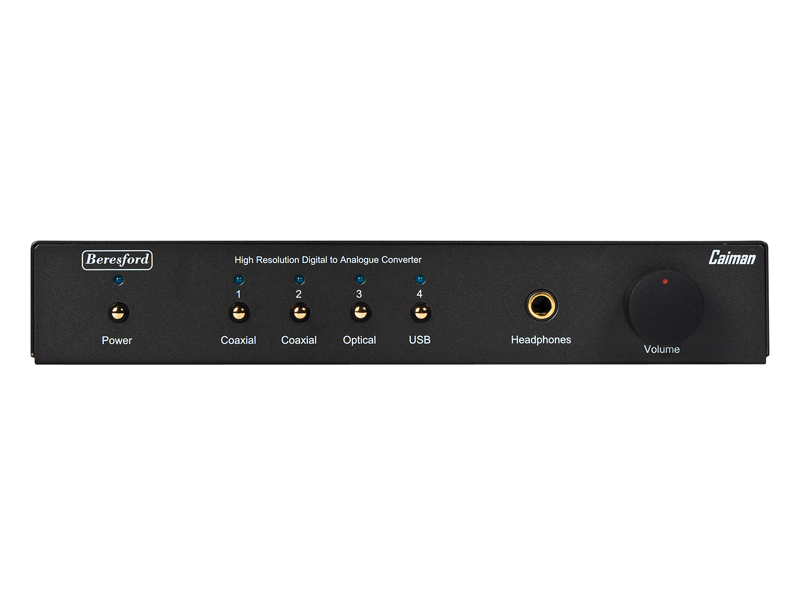TechRadar Verdict
An intelligent mix of features, with particularly good input flexibility, but sound doesn't quite reach the levels of some at this price. Good resolution but some mildly disappointing rhythmic skills
Pros
- +
Good mix of features
- +
Good selection of inputs
- +
Good resolution
Cons
- -
Mildly disappointing rhythmic skills
- -
Not as good as the best
Why you can trust TechRadar
Like a 'DAC to water' Beresford got in on the current revival almost before anyone else. In fact, it was one of the first companies in the UK to offer a miniature budget DAC. And the good news is that the company remains small and highly focused, and its current range comprises three DACs and accessories such as cables.
The Beresford Caiman is, in fact, the top model and one that is identical in design to the cheaper TC-7520, but using higher specification components.
There are inputs aplenty on this DAC, with two electrical and one optical S/PDIF, plus a USB input. Outputs are generous too, with the obvious fixed-level line output joined by a variable output (controlled by a traditional volume control behind the front-panel knob) and a headphone output.
This allows the DAC to also be used as a preamp (in a digital-only system) as long as a reasonably sensitive power amplifier is used. The digital receiver for S/PDIF signals is capable of handling 96kHz sampling rates, while a Burr-Brown component handles USB reception.

The actual DAC chip is a Wolfson – not quite the highest-spec part from that company – but still very capable, including digital filtering. Beresford claims that the WM8716's use of 64-times oversampling is unusual, though we're not quite sure in what respect, since many chips have been offering similar oversampling ratios for years.
Care in component selection extends to the use of reed relays for muting. The possible drawback of these is that they take a finite time to operate when a track opens rapidly from 'digital black', but Beresford has ingeniously included enough time delay to allow for this, so you don't actually miss any music (it would only be a milli-second or two, but the audible result can be an annoying click).
Sound quality
Sign up for breaking news, reviews, opinion, top tech deals, and more.
As it happened, our programme for the main 'blind' listening test followed something of a trend from rock to classical and as it did so, the comments on this DAC seemed in general to become rather less positive. Does this suggest that it's got rather limited musical tastes?
Well, yes... and no. Obviously, we'd like every bit of hi-fi we test to sound equally assured with all kinds of music, but this one doesn't seem to discriminate quite as crudely as 'pop equals good, classical equals bad'. If our listeners are to be believed, it seems to be better with music that has a relatively straightforward texture.
The least successful track being the large-scale orchestral Rachmaninov, which has some very densely layered sounds to it, while by contrast, Dick Hyman's lively solo piano renditions of Fats Waller tunes danced along most enjoyably.
Perhaps surprisingly, given the success with rock, rhythm doesn't seem to be a particular success of this DAC. It's good at what it does, but it's not great and just occasionally our panel of listeners found it a little lacking in punch and energy. Detail's good, though, so you do really find out what's sometimes hidden in your recordings.
All-in-all, it's a classic balancing act between resolution and musical energy, coming down slightly biased in favour of the former. Performance seems largely consistent between the inputs, though there seems to be a slight preference for S/PDIF over USB.
The sound is a little clearer, with more extension in the bass and a slightly more precise treble, when using a CD player as source. It's a small difference though, and it certainly doesn't leap out in a 'chalk and cheese' kind of way.
The headphone output is excellent, however, with plenty of drive on tap and consistently good results, given that we tried it with several sets of cans.
Follow TechRadar Reviews on Twitter: http://twitter.com/techradarreview
